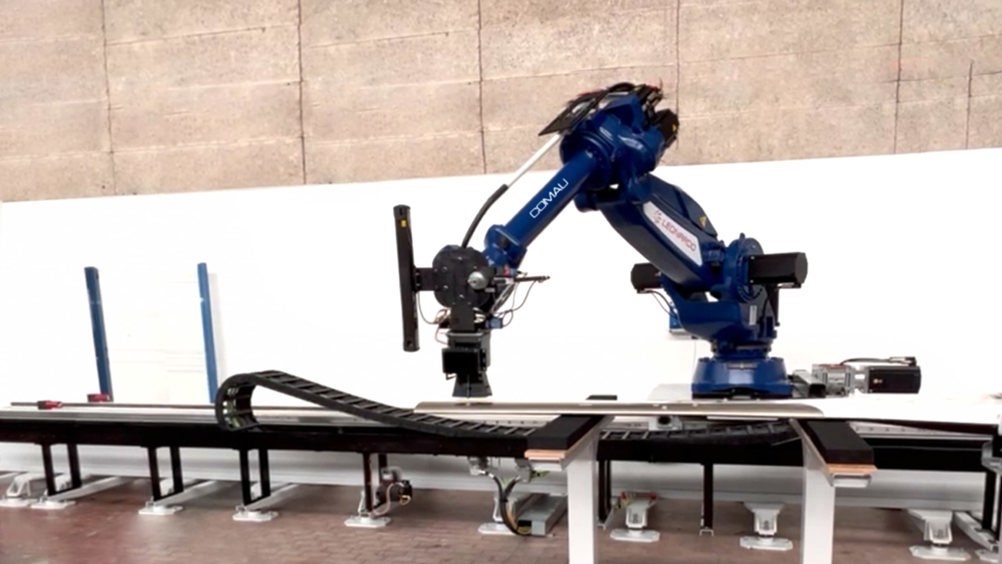‘Cognitive robotics’ aid helicopter blade inspection
Leonardo and Comau have developed what’s described as a ‘cognitive robotics’ platform that automates and refines the inspection of helicopter blades.

The two Italian firms claim that the new system can be used to inspect blades up to 7m, something that was previously a labour-intensive manual process. Using a combination of robotics, advanced vision systems and artificial intelligence, the robot performs autonomous tapping tests and multispectral surface inspection along the non-linear blade, measuring and verifying the structural integrity via thousands of points.
As the robot mechanically stimulates the blades, the sound response is recorded and photographed using a multi-spectral camera to detect hidden and superficial defects. The solution has been developed as a joint pilot project and was tested on-site at Leonardo’s facility in Anagni over the past year, a facility that specialises in rotor blade manufacture and aerospace composites.
“This technology demonstration project fits well in Leonardo’s strategy to transform industrial processes through digitisation,” said Mattia Cavanna, head of Technology & Innovation at Leonardo Helicopters. "It also aligns perfectly with our steadfast commitment to enhanced technical support, which in turn yields concrete benefits in terms of safety and quality.”
Register now to continue reading
Thanks for visiting The Engineer. You’ve now reached your monthly limit of news stories. Register for free to unlock unlimited access to all of our news coverage, as well as premium content including opinion, in-depth features and special reports.
Benefits of registering
-
In-depth insights and coverage of key emerging trends
-
Unrestricted access to special reports throughout the year
-
Daily technology news delivered straight to your inbox










UK Enters ‘Golden Age of Nuclear’
The delay (nearly 8 years) in getting approval for the Rolls-Royce SMR is most worrying. Signifies a torpid and expensive system that is quite onerous...